Nanny Goat Hill July 29, 2021
Nanny Goat Hill; Part One, the abyss
On the Rocks, The Woodstock Times
Updated by Robert and Johanna Titus
Development is always a controversial subject in the Hudson Valley. There are those who would ban it altogether, while others decry how little there is. Currently there are plans for a hotel and conference center along Partition Street, near Esopus Creek in the heart of Saugerties. Several acres of land are involved. Part of this is a little knoll called Nanny Goat Hill. The name goes back to the 19th century when, supposedly, goats grazed here. As we understand it, the plans call for Nanny Goat Hill to be dynamited, with 19,000 cubic yards of rock hauled off to make space for a parking garage.
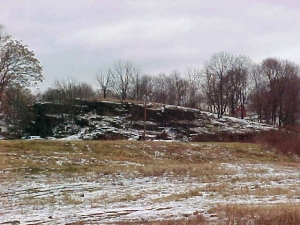
But some residents would like to save the hill and make it into a small park. They contacted us and wondered if we could be of any assistance in evaluating this plan. We generally try to keep this column from being political, and, as we do not live in Saugerties, we don’t think we should be vocal in the town’s decision making, but there is no harm that can come from looking at the geological heritage of this site. We have done so.
It has always been our opinions that nearly any site has an interesting geological story. Each place has a longitude and latitude. These dots on the map have been where they are for more than 4 1/2 billion years, and a great deal has happened during this time. The Nanny Goat Hill site has witnessed a lot of history and some of it is represented in the bedrock while more is carved into the landscape of the hill itself. We enjoyed our visit to Nanny Goat Hill.
This location displays some very nice and sizable ledges of bedrock. The unit exposed here is called the Austin Glen Formation which is part of the Normanskill Group. The geological jargon may be dull, but the story behind these units is quite interesting. All of this sequence consists of thick gray sandstones alternating with nearly black shales. These are sedimentary rocks, and they once were, of course, sediments: sands and muds to be specific. That’s where it gets interesting. The sands and muds accumulated at the bottom of one of the deepest oceans that ever existed.
If you visit this site, you can see horizontal strata of sandstone and some shale, right from the sidewalk. Each stratum was once at the bottom of the ocean. This ocean was a marine trench. To see something like this today you might have to visit the Marianas Trench of the western Pacific Ocean. There the water is about seven miles deep. That’s a lot deeper than Mt. Everest is tall. Think about that. Our ocean, the “Normanskill Sea,” might only have been four miles deep and that is just guessing, but it was deep, very, very deep.
At Nanny Goat Hill there are places where you can stand on such strata and you are, when you do so, quite literally standing on the bottom of such a deep ocean. In your mind’s eye you can look around and see nothing but blackness, you can feel the intensity of the cold, and hear the absolute silence of the abyss. But, more than anything else, you can feel the pressure that is generated by four miles of very heavy seawater. If you understand all this, then Nanny Goat Hill is a real adventure.
There is more. The majority of the rocks are those dark gray sandstones. But in between these strata are much thinner black shales. The sandstones represent what geologists call turbidity currents. Those are the product of submarine avalanches. This ocean bottom was not only deep, but it was also very steep. Periodically, earthquakes would jar loose great masses of sand, and these would form avalanches that tumbled down into the depths. After an avalanche was over, long periods of quiet would follow and that’s when the black shales came to be deposited as “normal” seafloor mud. This was a “hurry up and wait” sort of seafloor.
An obvious question for a geologist to ask is: “Where did all that sand come from?” There is only one answer. Off to the east there was a rising mountain range. These peaks are called by geologists the Taconic Mountains and they made up the original Taconic Range. Mountain building must have come to something of a peak (pardon the pun) and so, as we looked off to the east we could see mountains towering above the horizon, reaching elevations that would rival today’s Rocky Mountains or the Andes. These rising mountains were weathering and eroding, and those processes created the sand. It traveled down mountain slope streams and was carried out to sea. Eventually the sand was caught up in gravity slides and came to rest on a seafloor that would someday be Nanny Goat Hill.
All in all, our visit to Nanny Goat Hill was a bit of an adventure. We had taken ourselves back hundreds of millions of years through time and miles beneath the sea. We had witnessed rising mountains and great marine avalanches. It was, in short, just another day in the life of two minor league geologists.
Contact the authors at randjtitus@prodigy.net. Join their facebook page “The Catskill Geologist.”

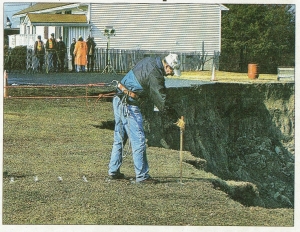 LANDSLIDE IN GLENMONT
LANDSLIDE IN GLENMONT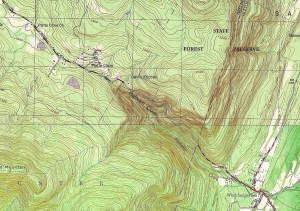
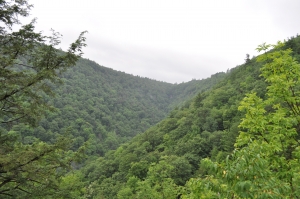
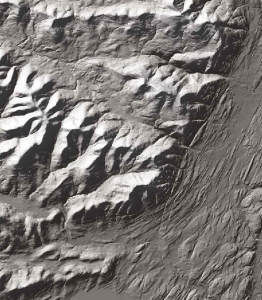
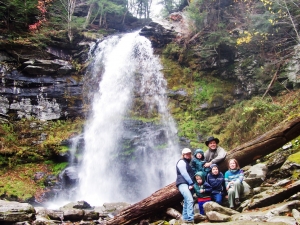
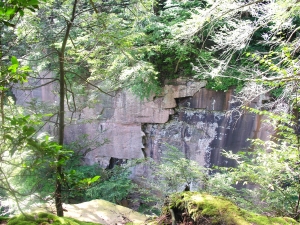
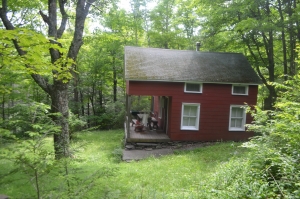
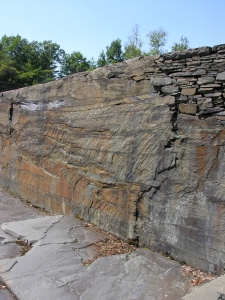
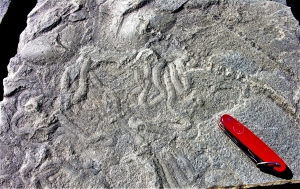
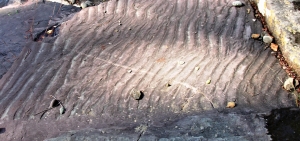
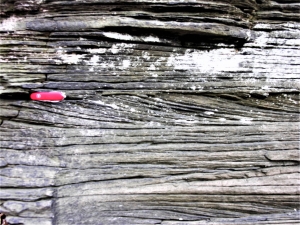
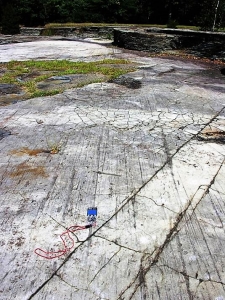
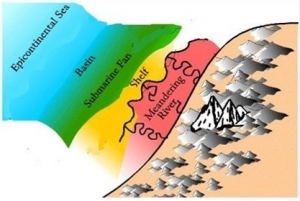
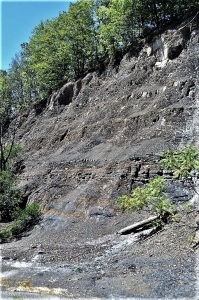
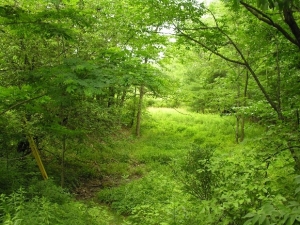
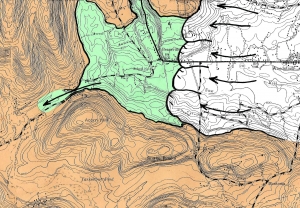

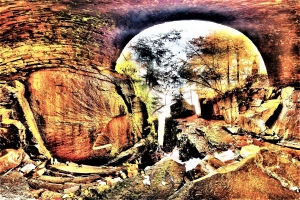
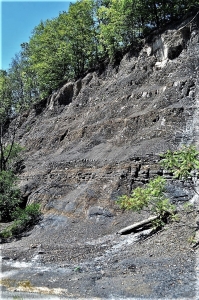 t it occasionally in Woodstock Times columns over the years. The unit of rock has recently become very important.
t it occasionally in Woodstock Times columns over the years. The unit of rock has recently become very important.